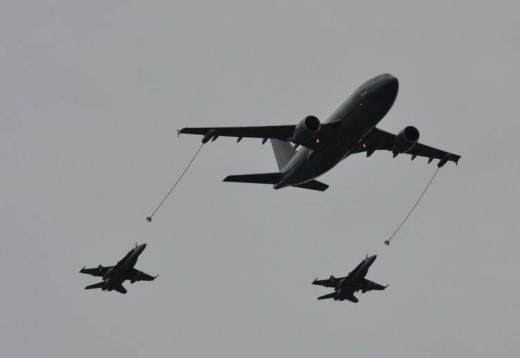
Last week the federal government announced that Canada will send six CF-18 fighters to Poland in response to escalating tensions in the Ukraine.
The aircraft will be part of a NATO operation and will patrol the borders of the Baltic countries of Estonia, Latvia and Lithuania to beef up their security in the uncertain situation.
But while sending half a dozen aircraft to the region may seem like a relatively token gesture, it will actually require a significant effort on the part of the RCAF with a lot of behind-the-scenes work that doesn’t get much attention.
Getting there is just a small part of the operation but it’s not as simple as closing the canopy and setting the GPS. CF-18s have a ferry range of about 1,200 miles while carrying ordnance and since they can’t land to refuel while loaded with bombs and missiles, they have to go non-stop.
That means in-flight refueling and the most likely scenario is a seven-ship formation with one of the RCAF’s Polaris tanker/transports. The converted A310 airliners cruise at about the same speed as the Hornets and can carry enough fuel to get them all across the pond non-stop.
But things can and often do go wrong on such operations and if one of the fighters had a problem that required the pilot to eject, the Polaris and remaining fighters would be helpless to render assistance.
Therefore, it’s standard operating procedure to have the formation shadowed by a CP-140 carrying a life raft and other survival gear for the pilot in case he or she has to abandon the aircraft. The Aurora can also loiter in the area for many hours and vector rescue ships to the downed pilot.
Once in Poland the fighters and personnel will need a constant supply of spare parts and stores and, in the worst case, more ordnance.
